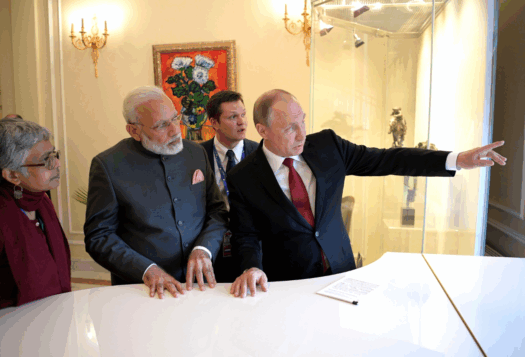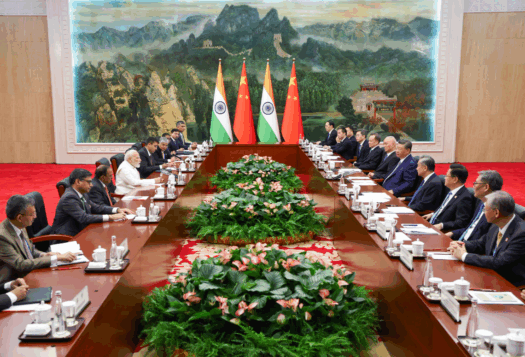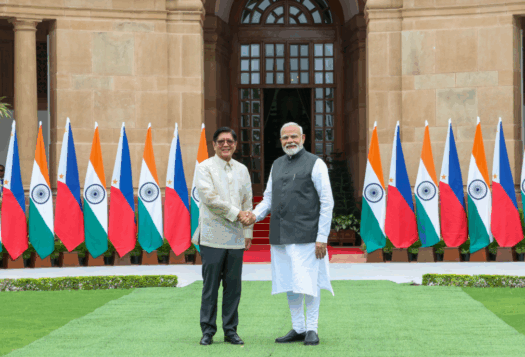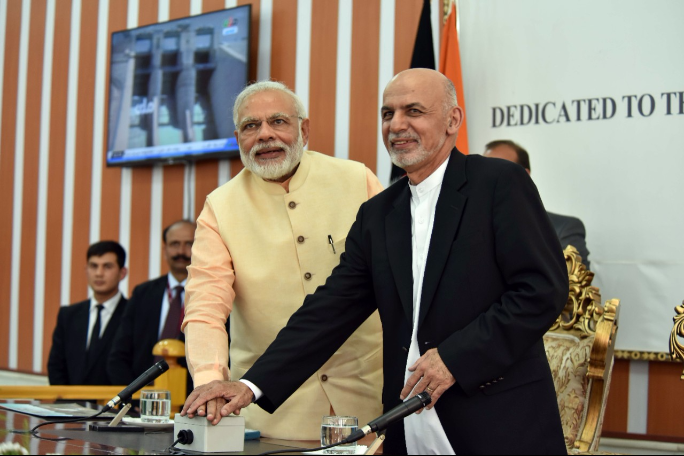
Since the Taliban took over Afghanistan, India has been contemplating its approach towards the new government. As an old ally of Kabul, New Delhi faces the dilemma of balancing its strategic interests in Afghanistan while debating the morality of engaging with the Taliban, which has historically oppressed women and minorities and recently appointed many hardliners to key government positions. India is still playing catch up, hoping that its strategy of only engaging with factions of the Taliban seen as being more “nationalist” and not under the influence of Pakistan will enable it to still maneuver in Afghanistan amid a new era of great-power competition.
India’s previous strategy in Afghanistan was premised on Ashraf Ghani’s government staying in power and a continuing U.S. presence in the country. However, as the Taliban began a steady offensive across Afghanistan during the U.S. withdrawal earlier this year, reports emerged about potential developments in India’s thinking regarding the insurgent group. New Delhi believes it has more to lose by not engaging with the group despite its previous reservations about the Taliban regime. Although limited by the lack of land access to Afghanistan and the Pakistan military-intelligence establishment’s continued influence on the Taliban, India’s strategy has evolved. India’s outreach to certain factions of the Taliban was borne out of strategic necessity; a desire to not only protect India’s security and economic interests in Afghanistan but also ensure that the Taliban recognized the importance and value of India as a regional power. India’s strategy of engaging with a select group of Taliban leaders and working with regional partners allows for more room to maneuver in Afghanistan, attempting to counter the increased influence of its strategic competitors, Pakistan and China.
India’s Historical Presence in Afghanistan
Although India has never been in a position where it has considerable influence over the happenings in Afghanistan, the presence of the Taliban in Kabul means that India now has less sway than usual. India’s interests include protecting the USD $3 billion worth of development assistance it has provided Afghanistan since 2001—including infrastructure projects, such as hydroelectric dams, highways, schools, and hospitals—and ensuring that Hindu and Sikh minority populations are protected.
India’s strategy of engaging with a select group of Taliban leaders and working with regional partners allows for more room to maneuver in Afghanistan, attempting to counter the increased influence of its strategic competitors, Pakistan and China.
With no leverage over the Taliban and few options of engagement that would help protect its interests, India hopes it can win back some space in a territory that has seemingly fallen under the influence of strategic competitors, Pakistan and China. New Delhi has shifted in its policy vis-à-vis the Taliban, from having no contact with the group when they were first in power between 1996-2001, to opening backchannel discussions with some leaders, to meeting with Taliban representatives in Doha in August and Moscow last month. These changes signify India’s realpolitik concerns about its security and economic interests in the country.
While India continues to have doubts about the nature of the Taliban government and the plight of ordinary Afghans, the changed reality on the ground has meant that India has had to adapt. It has consistently reiterated its concern regarding the potential use of Afghan soil for anti-India terrorist activities. While the Taliban cannot be taken for its word, India has received assurances from the Taliban on these concerns. However, India has deliberately chosen to focus its outreach on leaders that are not members of the Haqqani network or part of the Quetta Shura, who are seen as proxies of the Pakistan military-intelligence establishment. By engaging with certain Taliban leaders and not others, India hopes that it conveys its geostrategic importance to the Taliban while not ceding ground to Pakistan.
India’s Current Efforts in Afghanistan
Since its initial outreach to the group, the situation on the ground has changed drastically, with the Taliban taking control of the country and India finding itself without real partners and dependable allies in Afghanistan. As a consequence, India fears that by not talking to the Taliban, its influence in Afghanistan built over twenty years would further evaporate.
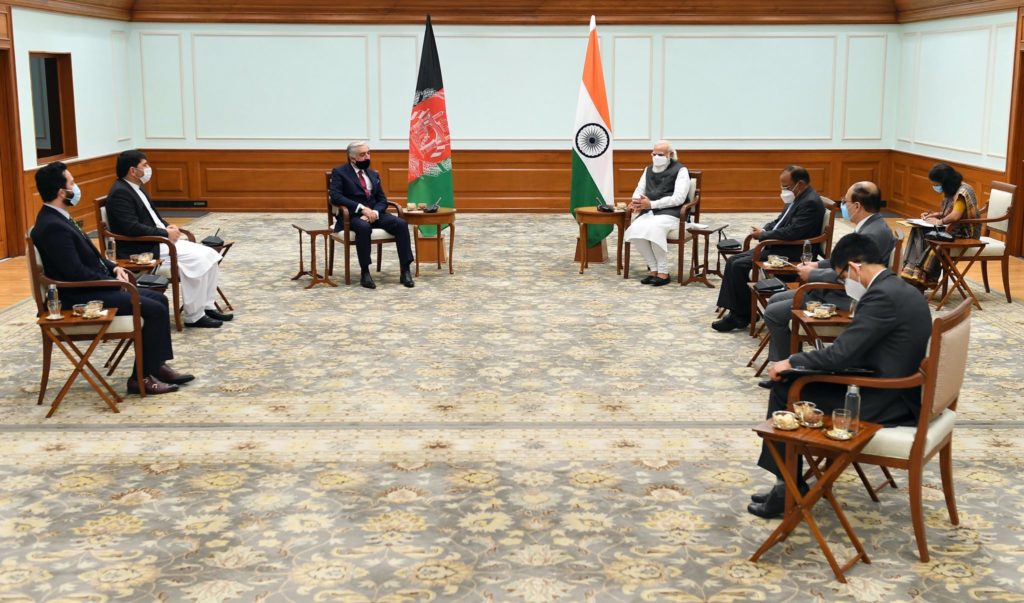
Keeping this in mind, New Delhi hosted a regional security dialogue on Afghanistan, which the national security advisors of the five Central Asian Republics, Iran, and Russia attended earlier this month. The conference produced the Delhi Declaration, which “stressed the necessity of forming an open and truly inclusive government that represents the will of all the people of Afghanistan and has representation from all sections of their society.” The participating nations also “paid attention” to the need for humanitarian assistance in Afghanistan and threats caused by terrorism, radicalization, and drug trafficking.
The dialogue, most importantly, highlights India’s desire to work with like-minded nations in Afghanistan and be a crucial member in deliberations regarding its future. By hosting a gathering of regional nations, it has demonstrated that apart from just wanting to be at the table, it has a need to be an active and engaged member of the regional discussions. As one source aptly put it to the Indian Express, “when you are not at the table, you are on the menu.” In other words, India realizes the importance of working with regional, like-minded nations in Afghanistan and knows that if left out of any regional discussions on Afghanistan’s future, it will lose out. All the countries present at the dialogue are interested in Afghanistan having an inclusive government, contrary to the current Taliban government in power. Like India, Russia and Iran are against the marginalization of factions within the Taliban that have enjoyed their patronage and do not want a Taliban under disproportionate influence from Pakistan.
Although India’s desire for Afghanistan to be an inclusive, democratic republic is now a far-fetched dream, India is doing whatever it can to accept the changed reality in Kabul while balancing its principles and real-world pragmatism.
Pakistan and China were invited by India but chose not to attend the conference, and, thus, were absent from the Delhi Declaration. While their lack of participation in the dialogue is not surprising, what matters is that other regional nations attended realizing not only the importance of coming together for the sake of Afghanistan but also in recognizing the value that India brings to the table, a perspective that is contrary to Pakistan’s agenda for Afghanistan. While each country may have its respective interests and differences in Afghanistan, the dialogue did see an “extraordinary degree of convergence” on assessing the challenges facing the country and the region. This sends a message to China and Pakistan that there remain a large group of countries with whom India is ready to work with regarding Afghanistan and vice-versa. While the Taliban may continue their close ties to Pakistan, and through Pakistan to China, India does not need either of them to do good work in Afghanistan.
Conclusion
By using its diplomatic heft and economic clout, India hopes to regain its lost influence in Afghanistan. Although India’s desire for Afghanistan to be an inclusive, democratic republic is now a far-fetched dream, India is doing whatever it can to accept the changed reality in Kabul while balancing its principles and real-world pragmatism. As for the Taliban, their quest for greater international legitimacy will mean that the leadership will need to acknowledge the crucial role that regional countries, including India, can play in helping develop Afghanistan as an inclusive nation where all different groups of people and minorities are protected and respected. However, any partnership or signaling of stronger ties with India will be met with substantial resistance from factions of the Taliban that maintain strong ties with Pakistan—most notably the Haqqani network, who’s members hold key posts in the current government. Until then, India will have to work through its partners and diplomatic allies in the region to try and make a difference.
***
Click here to read this article in Urdu.
Image 1: Narendra Modi via Flickr
